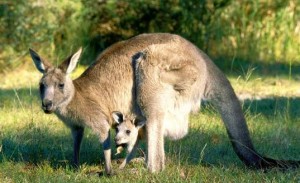Fifteenth-century European Knowledge of Australia? August 5, 2011
Author: Beach Combing | in : Medieval, Modern , trackbackHere is one of these sources that Beachcombing just doesn’t know that to do with. It seems to show knowledge of southern Australia/ Antarctica being shared with a European in Java at the end of the fifteenth century. Perhaps this is not so extraordinary as, after all, knowledge is not discovery: and ‘knowledge’ here could be a simple fact handed up the Pacific on a chain of Chinese whispers. Still, it gives the sceptic in Beachcombing the shivers.
Our narrator is a reliable Italian, Varthema. Varthema, first name Ludovico (c. 1465-1517), was an explorer from Bologna who in the sixteenth century made his way into the Arab world and then on into India and finally Burma and the south seas. We have met him before messing around with unicorns at Mecca. Anyway, back to the knowledge of the far south of the world. Varthema is at Java when he has this conversation.
My companion asked the Christians: ‘Now that we have lost the north star, how does he steer us? Is there any other north star than this by which we steer?’ The Christians asked the captain of the ship this same thing, and he showed us four or five stars, among which there was one which he said was opposite to our north star, and that he sailed by the north because the magnet was adjusted and subjected to our north. He also told us that on the other side of the said island [Java], towards the south, there are some other races, who navigate by the said four or five stars opposite to ours; and, moreover, they gave us to understand that beyond the said island the day does not last more than four hours, and that there it was colder than in any other part of the world.
The four or five stars are the southern cross: already known in Europe at this date – they even make a brief appearance in Dante c. 1300 (another post, another day). It is also true, of course, that the day gets shorter and shorter until, eventually a long way to the south of Australia, it does indeed become only four hours in season and, naturally, it gets colder.
Perhaps we don’t have real knowledge here – how good in any case was the translation of the ‘Christians’? – just a deduction, on the part of Javan sailors who knew that day length changed the further or closer to the equator you got?
Any ideas? drbeachcombing AT yahoo DOT com
***
9 August 2011: Cory writes in with the general picture ‘The question of early European knowledge of Australia is a long-running one, with the Portuguese being the favorite candidates, though the usual theory places them a few years after your Varthema [note Beach posted a while ago on a controversy over ‘Great Java’ on maps]. Wikipedia is actually pretty good on the competing arguments. There are also claims the Chinese showed up in 1421, or perhaps even earlier. But I suspect that – as with coelocanths – the existence of Australia was something that the locals always knew about but just didn’t find very interesting, since there were no vast riches to be discovered.’ Doug writes in with specifics ‘actually, I’m not surprised. The Yolngu in Arnhem land had been trading sea cucumbers with people from Sulawesi for several hundred years. (Even to the extent that in contemporary spoken Yolngu a dollar or money is referred to as rupiyah). Seems entirely possible that someone in Java would be able relay a garbled version of how to sail to Arnhem land. The Wikipedia articles on the Yolngu and Macassan contact with Australia are as good a starting point as any.’ Thanks Doug and Cory!



